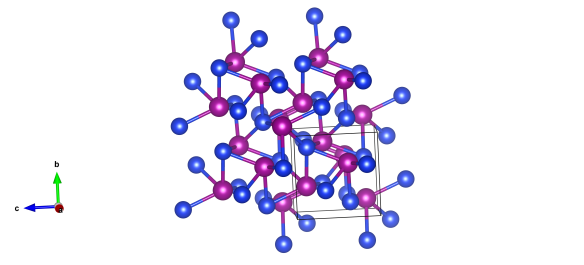A mineral from interplanetary dust
As the good people of Perth yesterday woke up to a fireball streaking across their skyline, it seemed a good occasion to feature a mineral that was discovered from studies of the interplanetary dust above our skies.
What does it look like?

Silicon atoms are depicted in blue, and manganese in purple. Image generated by the VESTA (Visualisation for Electronic and STructural Analysis) software http://jp-minerals.org/vesta/en/
What is it?
This is the crystal structure of manganese silicide, which was originally synthetically created in the lab as a semiconductor. Its semiconductor properties were driven by the fact that the manganese atoms substitute with iron and cobalt atoms.
It would have remained as only synthetic material, until in 2010 a small grain of this material was identified in dust collected by a high-altitude aircraft. This discovery, out of the lab, meant that it could now be given a mineral name. In this case the mineral was name Brownleeite, after Dave Brownlee who founded the field of interplanetary dust research.
Where did the structure come from?
The original structure determination of manganese silicate (later renamed Brownleeite) was done by B. Boren in 1957, and is #9013994 in the Crystallography Open Database. The work identifying this as a mineral was published in the journal American Mineralogist in 2010.






